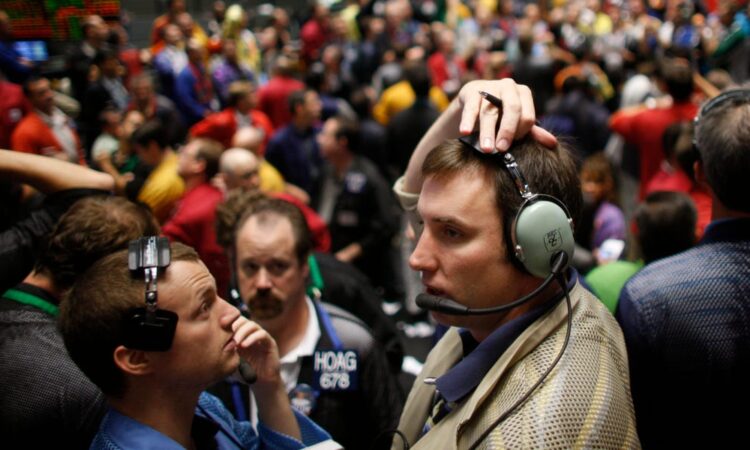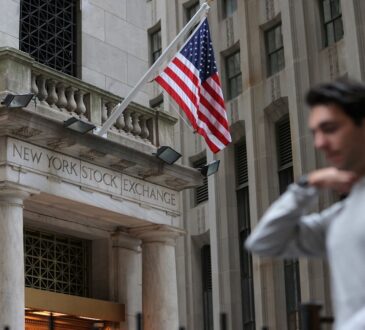
The labor market smashed expectations in January, adding 353,000 new jobs, far above economist forecasts of 187,000. The unemployment rate also stayed at a historically low 3.7%.
The data is the latest reassurance for investors and the Federal Reserve that the economy is on solid footing with higher interest rates.
Despite the strong headline number, however, there are signs that the job market is deteriorating beneath the surface.
For one, the Bureau of Labor Statistics’ household survey is showing some divergence from its payroll survey. Household survey results come from a representative sample of households in the US, and include self-employed workers and farm workers, according to the BLS. Meanwhile, payroll survey results — like the jobs report mentioned above — come from a representative sample of businesses and do not include farm workers.
Because the employment pool is bigger for the household survey, the BLS comes up with an adjusted version to more closely match the payroll survey. Right now, it’s dipping while payrolls continue upward.
Bureau of Labor Statistics
Of course, more data is needed to confirm a trend. The differences could be due to things like sampling error, new business creation, unreported employment, deaths, and more, the BLS says.
But the gap isn’t encouraging, according to Jeff Schulze, head of economic and market strategy at ClearBridge Investments.
“The most glaring issue with today’s payrolls release comes from the adjusted household survey which continues to tell a very different story coming in at -450,000,” Shulze said in prepared comments on Friday. “Over the past year, the household survey has averaged less than 150,000 jobs per month than the establishment survey. This divergence bears watching as the household survey historically has been more accurate at inflection points indicating job growth may be less impressive than it currently appears.”
Second, it’s important to note the kind of jobs being added. According to BLS data, the number of full-time jobs continued to decline in January. Again, more data is needed to form a proper trend. But the current direction resembles what has transpired in prior recessions.
St. Louis Fed
“The decline in full-time employment suggests recession risks are higher than thought,” said Lance Roberts, the CIO of RIA Advisors, in a January 12 note.
Third, data from the National Federation of Independent Business shows small businesses’ plans to hire are at the lowest levels since the early months of the pandemic.
NFIB
“The NFIB has been the best single leading indicator of payroll growth over the past 18 months, and we would be surprised if the gap between the survey and the hard data were to persist,” said Ian Shepherdson, the chief economist at Pantheon Macroeconomics, in a note on Friday morning.
“This matters, because the survey leads by about four months and it now points clearly to much slower private payroll growth in the second quarter, perhaps just 50K or so by May,” he continued. “It might be wrong – the NFIB was unreliable during the pandemic, and its longer run relationship with payrolls is patchy, to say the least – but if it’s right it means that a game-changing shift in job growth is coming, soon, and the sell-off in Treasuries triggered by today’s report will reverse in time.”
Is a recession sneaking up?
The strong headline numbers despite other signs of deterioration means a recession could sneak up on investors, who are largely pricing in the opposite. Bank of America’s Global Fund Manager Survey says 66% percent of fund managers are betting on a soft landing, and the S&P 500 stamped a new all-time high on Friday.
Lauren Goodwin, the chief market strategist at New York Life Investments, said in a LinkedIn post on Friday that the Fed’s likely response to the robust job gains in January will be to leave rates elevated, raising recession risks.
“While neither we nor the Fed want to see the #LaborMarket deteriorate, I am concerned that ‘higher for longer’ interest rates may usher in a more painful credit cycle than would be the case if the economy were more clearly slowing now,” she said. “High labor and credit costs are beginning to materially impact corporate profits, which impacts both the labor market and (eventually) the default rate.”
She also pointed out that the labor market picture can shift quickly. The chart below shows that on average since 1948 (excluding 2020), the job market swung from adding 180,000 payrolls in the peak quarter before a recession to losing 213,000 in the first quarter after.
ClearBridge Investments
If a recession arrives, stocks could be in for a rough time. For example, peak-to-trough, the S&P 500 fell an average of 45% during the last three recessions: 2020, 2008, and 2001.
Still, while there are signs of weakening, there are also signs of improvement in the labor market. The number of sectors contributing to job gains was higher in January than in months prior, and job-gain revisions for the month were revised upward for the first time in months.
Also, it’s hard to ignore the resilience of those headline numbers — monthly payrolls and the unemployment rate — which matter most.
Further data in the months ahead will show whether investors have been betting on the right or wrong outcome.



